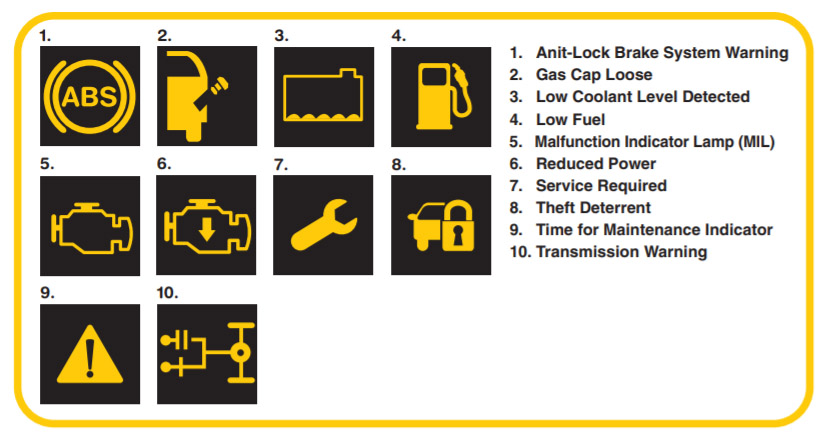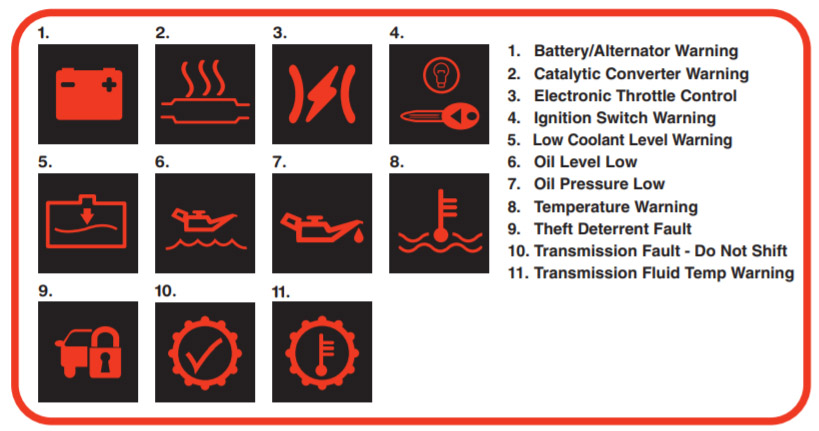Engine Error Codes
Welcome to Engine Error Codes information service. EngineErrorCode.com is listed ODB , ODB-I and ODB-II codes with their meanings, reasons and how to fix them. These Engine Error Codes divided 4 parts : Diagnostic Body (B) Trouble Code ,Diagnostic Network (U) Trouble Code ,Diagnostic Chassis (C) Trouble Code and Diagnostic Powertrain (P) Trouble Code.
Engine Error Code Logic :
1st digit P = Powertrain B = Body C = Chassis U = Network 2nd digit 0 = Standard 1 = Manufacturer specific |
3rd digit 1 = Emission management 2 = Injector circuit 3 = Ignition 4 = Auxiliary emission 5 = Vehicle speed & idle control 6 = Computer & output circuit 7 = Transmission |

|
How To Diagnose Engine Errors ?
When a car's on-board diagnostics system identifies a problem with the car's performance, it turns on a dashboard warning light and registers a code that identifies the issue. This engine error code, called a Diagnostic Trouble Code (DTC), is stored in the OBD system and can only be accessed by connecting a scan, or diagnostic tool into the EOBD diagnostic socket and reading the DTC off the display of the scanner.
Engine Check Light Meanings
Yellow List

- Anti-Lock Brake System Warning
- Gas Cap Loose
- Low Coolant Level Detected
- Low Fuel
- MIL - Malfunction Indicator Lamp
- Reduced Power
- Service Required
- Theft Deterrent
- Time For Maintenance Indicator
- Transmission Warning
Red List

- Battery/Alternator Warning
- Catalytic Converter Warning
- Electronic Throttle Control
- Ignition Switch Warning
- Low Coolant Level Warning
- Oil Level Low
- Oil Pressure Low
- Temperature Warning
- Theft Deterrent Fault
- Transmission Fault - Do Not Shift
- Transmission Fluid Temp Warning
DTC Check Process :
To check diagnostic trouble codes (DTCs) in an engine, you will need a diagnostic tool that can interface with the engine's onboard computer. This tool, often referred to as an OBD-II scanner, can be purchased at most auto parts stores or online. Once you have the tool, you can connect it to the engine's diagnostic port, usually located under the dashboard on the driver's side. The tool will then be able to read any stored DTCs and provide an explanation of the problem. Some vehicles have also on board diagnostic system, you can check the vehicle manual to know the specific process of checking DTCs in your vehicle.
How To Compare Similar OBD-2 Codes
To compare similar diagnostic trouble codes (DTCs) using an OBD-II scanner, you will first need to retrieve the codes from the vehicle's onboard computer. Once you have the codes, you can compare them by looking at the code number and the associated description of the problem. It is also helpful to compare the codes against a code lookup database or a repair manual for your specific make and model of vehicle.
It is important to note that similar codes may have slightly different descriptions or causes depending on the vehicle's make, model and year. So, it's always a good idea to cross reference the codes with the specific vehicle's factory manual, and also consult with a mechanic or forum discussion.
Additionally, it's not recommended to diagnose a vehicle based on codes alone, proper diagnosis is done by checking the symptoms, codes and other information together.
Common OBD-2 Codes
OBD-II (On-Board Diagnostics-Second Generation) is a system built into modern vehicles that allows for the detection and reporting of various engine and emissions-related faults. Some common OBD-II error codes include:
- P0171: System too lean (fuel mixture too lean)
- P0174: System too rich (fuel mixture too rich)
- P0300: Random/Multiple cylinder misfire detected
- P0420: Catalyst system efficiency below threshold
- P0500: Vehicle speed sensor malfunction
- P0606: Control module performance
- P1101: Mass or Volume Air Flow Circuit Range/Performance
- P1200: Throttle/Pedal Position Sensor/Switch "A" Circuit
- P1399: Engine Misfire Detected (No Specific Cylinder)
It is important to note that these codes may have different meanings depending on the vehicle's make and model, and a professional diagnostic tool is typically required to properly diagnose and troubleshoot these issues.
How To Avoid Same OBD-2 DTC Errors :
There are several steps you can take to avoid getting the same OBD-2 Diagn Trouble Codes (DTC) errors:
- Regularly maintain your vehicle: Regularly scheduled maintenance such as oil changes, air filter replacements, and spark plug replacements can help prevent DTC errors from occurring.
- Check and replace worn parts: Worn parts such as spark plugs, fuel filters, and oxygen sensors can cause DTC errors. Have them checked and replaced as needed.
- Keep an eye on your fuel and air filters: Dirty fuel and air filters can cause poor fuel economy, lack of power, and DTC errors.
- Check your vehicle's emissions system: Make sure the emissions system is functioning properly and that there are no leaks.
- Keep an eye on the engine oil level: A low oil level can cause damage to internal engine parts and can trigger a DTC error.
- Use only recommended fuel and oil: Using the wrong type of fuel or oil can damage your vehicle's engine and trigger DTC errors.
- Have a professional diagnose the issue: If you get a DTC error, it is best to have a professional diagnose the issue and make repairs as needed.
By following these steps, you can help prevent DTC errors and keep your vehicle running smoothly.
